It may seem strange to have “corporate communication” here – however it is usually one of the most underutilised areas in many businesses to generate content. There is a lot going on behind the scenes that customers and the media never really get to see. In many if not most, there are interesting stories, people and policies that are worth talking about. This is one area of content that Wikipedia and smart journalists constantly steal your traffic for – start getting it back!
Letter from CEO
There is nothing more powerful to distribute your company’s message than the actions and words of its chief exec. And if you are a small business, then your CEO is the guy making all the decisions – and has just as much clout to its small business customers as a large corporate has to its. It’s just a matter of degrees.
Although we call this section “Letter from CEO” – it could be pretty much anything – from a letter, to a blog post, to a video, to appearance in an advert. The core idea here is to use the most important person in the company to deliver your message – it could be one of the most powerful campaigns you run.
Some of my favourite content pieces in this section include:
So now I’ve said more than I wanted to say, and all that I am going to say, about this.Steve Jobs
Apple
First, this is a request and not an outright ban. Howard Schultz
Starbucks
Of course – though it may generate buzz and conversations, you ought to also try and make sure you reign in your CEO:
AT&T And Verizon Are ‘F——’ That Are ‘Raping You’ John Legere
T-Mobile
And most UK people would have spotted Richard Branson in Virgin Adverts…

Famous People (related to your business)
Many businesses have minor and major celebrities connected to them, from the CEOs to staff that are well known in their niches. Building content around these people ought to be a no brainer, yet not all brands take this on board seriously – there have been many times where you type in “brand+celebrity” and end up with news stories rather than content from their own sites – typically because their own sites DON’T cover this content. Over and above – we think one of the biggest failures most brand and celebrity partnerships have is the lack of an archive – we would love for brands to keep a digital record online of their various partnerships – over time this type of content could prove invaluable.
When Very.co.uk had a commercial relationship with Holly Willoughby, they worked hard to dominate those rankings by making sure they had a collection built specifically on the relationship:
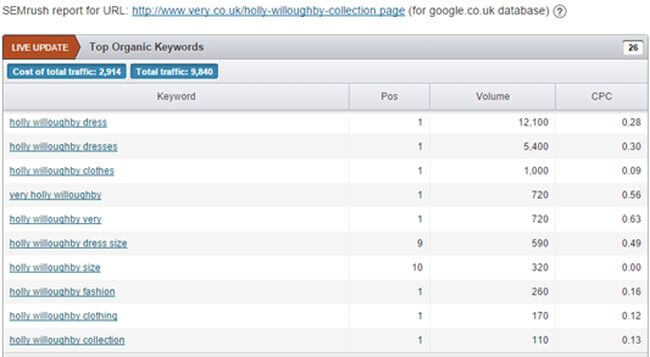
Although the relationship is over and the page no longer exists, the rankings have vanished too. Personally I would have 301 redirected the page to a content page or a blog post to try and maintain the rankings..
And it doesn’t necessarily have to be people you have as paid brand ambassadors – most businesses have at least one person of note, from a national to a local celebrity as a customer.
Identifying these individuals and creating a strategy to build content around them is a pretty simple way to create brand exposure.
Mission Statements
If your brand or business has a mission statement that it is proud of, why wouldn’t you publish it and the thoughts and ethos around it? To us it seems like a lost opportunity when you can’t find a brands mission statement online. And to the link addicts out there – take a gander at:
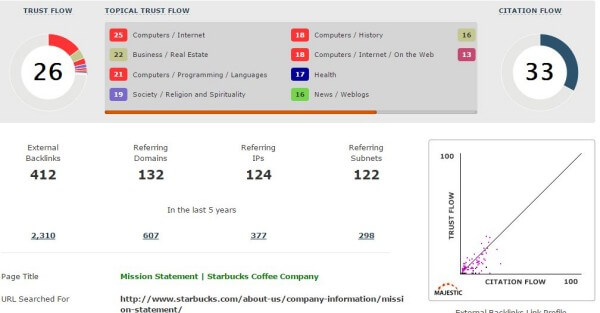
Starbucks Mission Statement gets an insane number of links.
It’s not an isolated result:
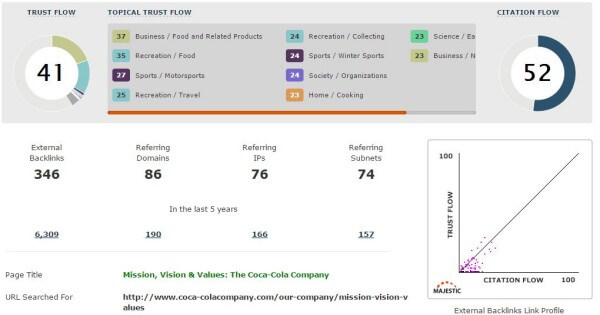
Company Processes
If you have interesting processes at play, it is always worth creating a content hub specifically around these, from manufacturing to buying decisions; there are always interested groups of customers that would love to see this content.
We used to often argue with a brand we used to consult with that we ought to get our buying department to outline how they make their buying decisions so that not only customers, but the general public understood the time and effort that went into these.
This may not be for all, but many businesses have interesting processes worth documenting.
Company Events
So it may not be a good idea to cover a drunken company end of year party, but conferences, talks, training events, sports competitions etc. all make for interesting content. Magazines tend to do this really well – although we guess they are in the business of content…

Don’t forget, depending on the type of company and its size, you could have a number of people who are active in social media and blogging, and as such could pick up a few decent links if they post links to the photos and galleries.
We are always surprised so few event organisers for examples don’t hire a photographer to cover events and create photo libraries which are bound to get links and social shares.
Success Stories
Most businesses embark on projects whose outcomes may be risky or potentially prone to failing – when and if these succeed, putting together pieces of content on how things fell into place makes for interesting reading. I remember at a company event how the Managing Director revealed that when they launched their new pricing policy, they had a full contingency to roll back as they took a major gamble, and expected it to fail. It didn’t.
It was interesting to see that people at the top often lose as much sleep as the people actually executing major changes.
Interviews
From the CEO to the production guys to the creative to the marketing teams – interviews are interesting as long as the content is kept interesting. For example, if you were a large coffee chain – you could have 1 min interviews with all your Baristas over time – collate and launch a portal where people could view their thoughts and opinions. At the same time, interviews are a great way to seed offsite content – and a pretty good way to build links…
Staff Bios
We think we have touched on the fact that businesses may have a number of specialists and well known people attached to them – having Staff Bios and profiles could be a good way to leverage their individual authority to your brand. Although this may work better in the B2B world, we can see several applications of it in the B2C world – the key here is to identify the right people, the right niche and make sure that you make these profiles interesting enough.
Dont forget – your staff often meet people in official and unofficial capacities – it is quite common for people to google others. If one of your team members made an impact on a potential customer, without even realising it (say at a conference) then they are most likely to google them. Own that space
Behind the Scenes
We have touched on various elements of behind the scenes in the above few points – but there is much more to behind the scenes that what we have covered. Pretty much ANY business could roll out content in the form of “ A day in the life of” or build videos around what a process looks like, or even create a video of making a video advert!
People are inherently curious, and your customers much more so – if you want to build content that interests them – build content around what it takes for you to deliver whatever good or service that you supply them. It’s interesting if done right, and there are literally thousands of examples one could list here.
Company Policies
In a transparent world, it could help certain types of businesses to publish (in a user friendly way!) their corporate policies – from hiring to training, to dealing with social responsibility. What may seem dry to you and I, might be very useful and interesting to say a reporter covering a story that has a bearing on corporate responsibility.
We understand that it may not make sense to publish all of the company policy, but selecting interesting sections and building content around those is definitely an option we would explore. These policies could range from hiring to social responsibility. The key is in the presentation.
Take Aviva for example:
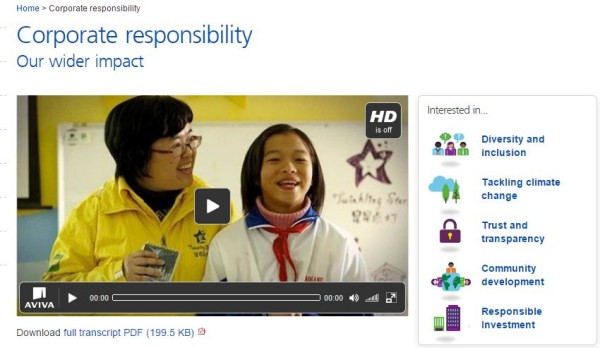
Great presentation. However the link builder in you (or the content marketer!) maybe wondering where the “juice” in this lies:
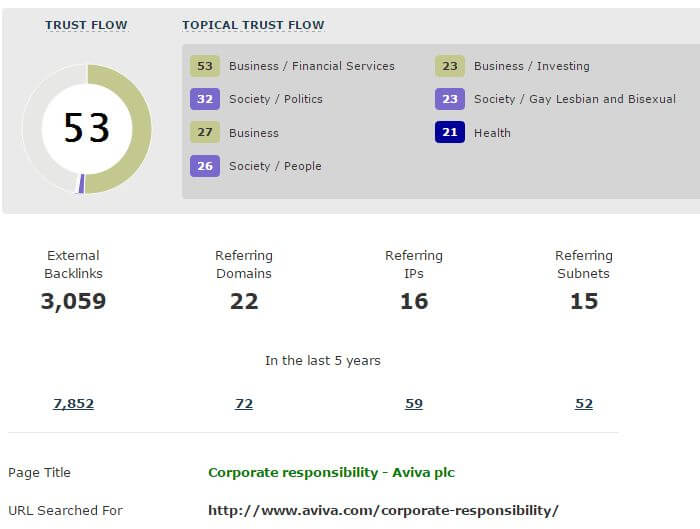
Even without a targeted link building approach – they have managed to attract some pretty good links. Think how well that would do with a targeted approach!
